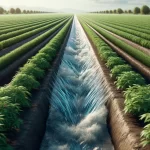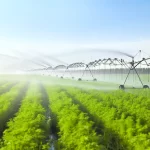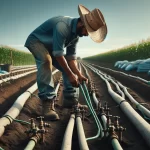Gravity irrigation is one of the oldest and simplest methods of irrigation used in agriculture. It relies on harnessing the force of gravity to carry water from an elevated source to the fields. In this system, water is transported through channels, ditches, or conduits from a natural source such as a river or reservoir to the fields located at a lower level.
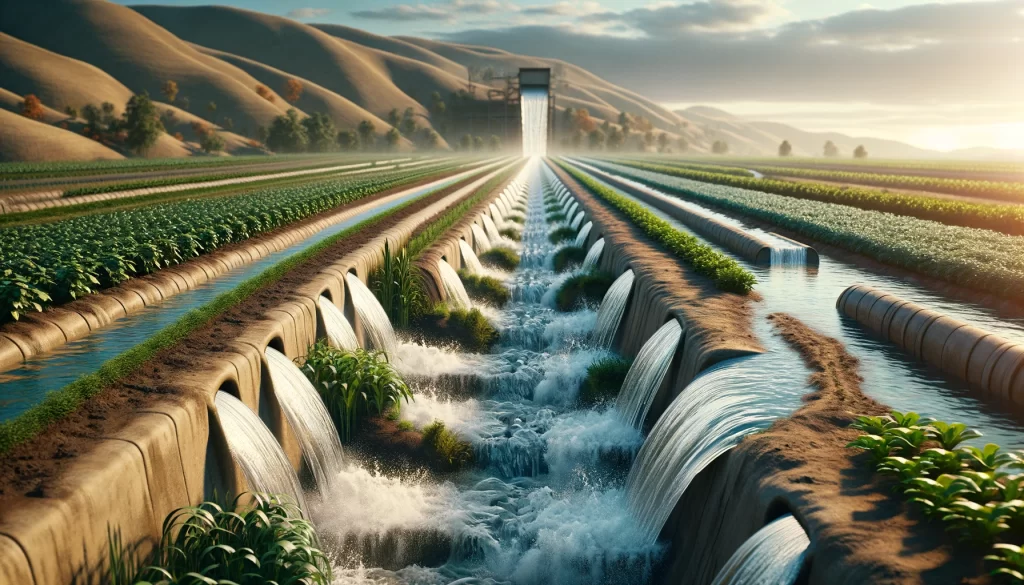
The operation of gravity irrigation is quite straightforward: water flows through the channels to the fields and is distributed uniformly over the soil surface. The slope of the land and the height of the water source determine the speed and amount of water that flows through the system.
This method of irrigation is especially suitable for land with a slight slope and soils with good permeability since it allows water to be distributed evenly over the land and to infiltrate slowly into the soil, providing moisture to the plant roots.
Although gravity irrigation is simple and economical to implement, it has some limitations. For example, it may be inefficient on steep terrain or poorly permeable soils, where water tends to accumulate in certain areas instead of infiltrating uniformly. Additionally, this method can waste water due to evaporation and surface runoff, especially in warm and dry climates.
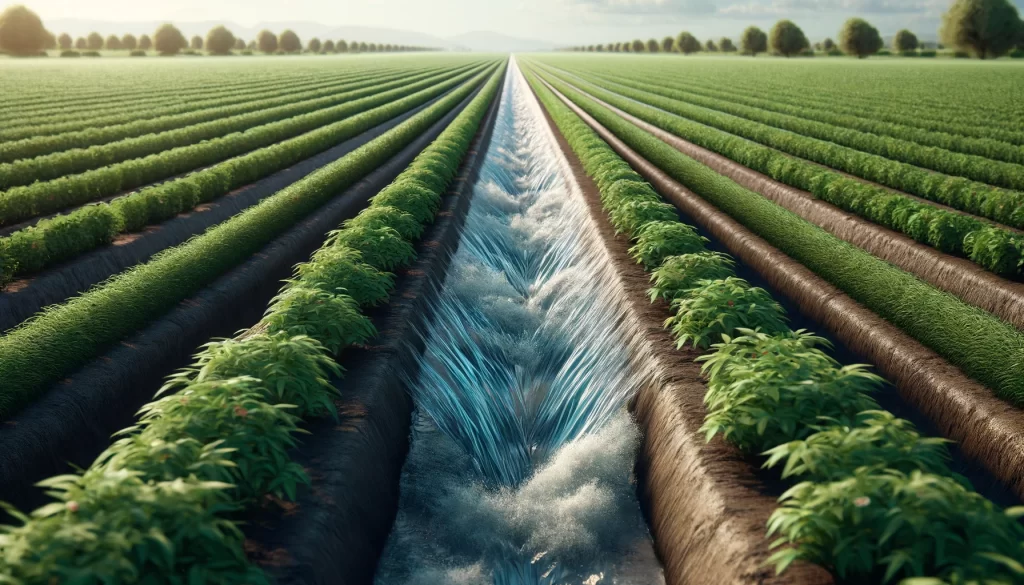
Despite these limitations, gravity irrigation remains widely used in many regions of the world, especially in areas where access to more advanced irrigation technologies is limited or where topographic and climatic conditions make it viable.
Ideal conditions for optimal functioning of a gravity irrigation system
- Terrain topography:
- Slightly sloping terrain: The slope of the terrain should be gentle and uniform, allowing water to flow steadily and without excessive accumulation in certain areas.
- Well-defined drainage channels: The terrain should have adequate drainage channels to prevent water accumulation and stagnation in certain areas.
- Crop distribution:
- Well-spaced crops: Crops should be distributed evenly and orderly, allowing easy and efficient access for water distribution.
- Grouping by water requirements: Crops with similar water needs could be grouped in specific areas to optimize irrigation use and ensure equitable resource distribution.
- Local climatic conditions:
- Adequate precipitation: A regular and moderate rainfall regime can complement gravity irrigation, reducing exclusive dependence on the irrigation system.
- Moderate temperatures: Non-extreme temperatures help reduce water evaporation and maintain a proper soil moisture balance.
- Low probabilities of extreme weather events: Avoiding events such as prolonged droughts or severe storms that can affect the effectiveness of the irrigation system and crop performance.
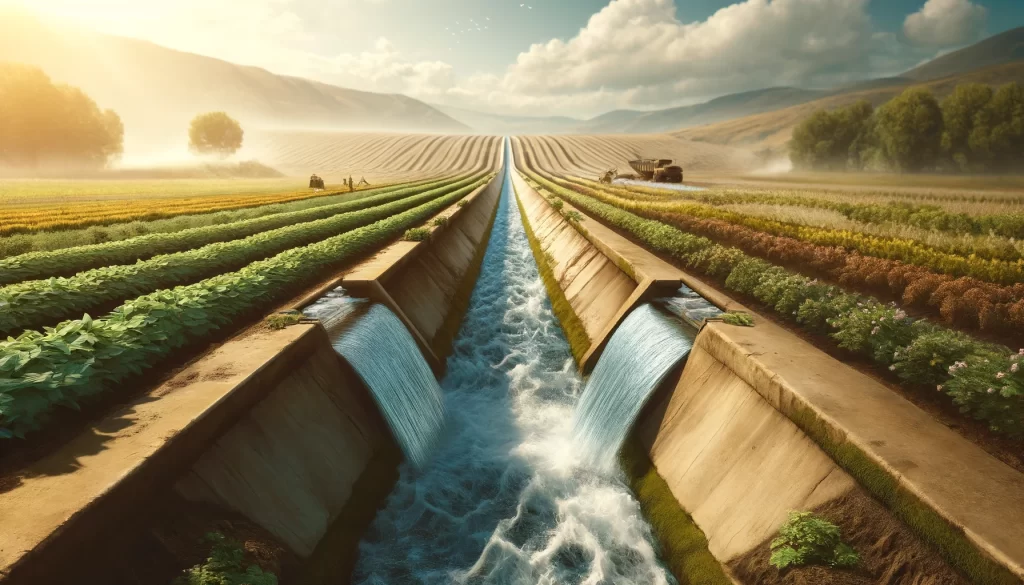
How to establish a gravity irrigation system
Here are some basic instructions for establishing a gravity irrigation system:
- Planning and design:
- Identify the water source: Locate the nearest water source, such as a river, stream, reservoir, or well.
- Assess the topography: Examine the terrain slope to determine the direction and natural flow of water.
- Design the canal system: Plan the route of the irrigation canals, ensuring they follow the terrain slope and distribute water evenly throughout the field.
- Canal construction:
- Excavation: Dig the canals following the terrain slope and ensure they have adequate depth and width to transport the necessary water flow.
- Compaction and lining : Compact the bottom and sides of the canals to prevent excessive leakage and water loss. You can line the canals with materials such as clay, plastic, or concrete to improve their durability and efficiency.
- Build control structures: Install gates or control structures at strategic points along the canals to regulate water flow and distribute it according to irrigation needs.
- Water distribution:
- Land leveling: Level the terrain in the fields to ensure uniform water distribution and prevent accumulation in certain areas.
- Construct irrigation furrows: Create furrows or terraces in the fields to direct water from the main canals to the crop areas.
- Operation and maintenance:
- Water flow monitoring: Regularly monitor water flow in the canals and adjust gates as necessary to ensure uniform distribution.
- Cleaning and clearing: Keep the canals free from obstructions and vegetation to prevent water flow blockage.
- Repairs and improvements: Perform periodic repairs on the canals and control structures to maintain the efficiency of the irrigation system.
Remember, the successful implementation of a gravity irrigation system requires careful planning, skilled labor, and constant monitoring to ensure optimal operation and successful agricultural production.
 AgronoBlog – Agriculture Blog
AgronoBlog – Agriculture Blog 